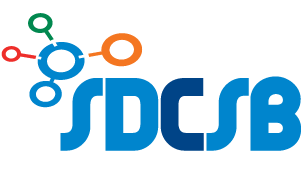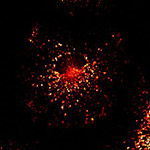Genetics, Bioinformatics and Systems Biology Colloquium
Thursdays, 12:00 pm – 1:00 pm
UC San Diego, Powell-Focht Bioengineering Hall, Fung Auditorium
Complete schedule here
Investigators: Elizabeth Winzeler, Sumit Chanda, Trey Ideker, Hannah Carter, Jason Kreisberg
Over time, many chemotherapeutic agents lose their efficacy as their targets – whether an infectious agent or a cancer – become resistant. The CDC estimated in 2013 that 23,000 Americans die every year due to antibiotic resistant pathogens. Millions of lives were lost in the 1990s because malaria parasites acquired resistance to the most commonly used antimalarial therapy. Drug resistance is a major reason why metastatic disease is nearly always incurable. While one strategy for combating drug resistance is to create new classes of chemotherapies, an alternative approach is to tailor therapies for metastatic or recurrent disease based on whether known resistance alleles (both copy number and single nucleotide variants) are present. Prior knowledge of likely resistance mechanisms can be used to suppress the development of resistant clones by inhibiting multiple pathways simultaneously – a method that has been used to treat HIV infection and cure tuberculosis and HCV. Before this vision of personalized medicine can be realized though, a more complete understanding of how cells respond to environmental stresses is needed.
| In this project, we will study the relationship between genes and chemicals in a variety of experimentally tractable systems in order to better define the resistome – the collection of resistance genes, their precursors and their interactions. Part of this project will focus on the model organism Saccharomyces cerevisiae as it is a highly genetically amendable organism for the interrogation of biological systems. Both the Winzeler lab and the Ideker lab have used yeast extensively to study gene function and genetic variation (Winzeler et al., Science 1998 and Winzeler et al., Science 1999) and to screen gene-gene, gene-environment, or protein-protein interactions (Guenole et al., Mol Cell 2013). As many molecular pathways are well preserved between humans and yeast, quantitative phenotypic data from screens in yeast can be used to infer highly informative network maps of molecular interactions in human cells. To maximize the amount of biological information from a given screen, it is desirable to maximize the test space (number of genes/gene pairs/conditions) and to record multiple orthogonal/conditional phenotypes (Califano et al., Nat Genet 2012 and Dutkowski et al., Nat Biotechnol 2013). This project will use in vitro evolution and sequencing of evolved strains for a diverse set of small molecule inhibitors with a relationship to drug resistance and human cancer to create inter and intramolecular interaction maps. In addition, we will create multidimensional, orthogonal phenotype maps of resistome-drug interactions in yeast using our previously described ultra-high-density screening approach (Bean et al., PLoS One 2014) combined with our new massively parallel time-lapse imaging system to rapidly and automatically generate growth profiles. The major difference between these approaches is that the former identifies specific base changes within the map that are critical for resistance, while the latter considers gene dosage and is relevant to understanding structural rearrangements that develop after cells are exposed to small molecules. |
|
It is now becoming clear that when it exists, knowledge of genetic interactions can be used to predict response to chemotherapy. One recent example found that mutation in RAD50 conferred dramatic sensitivity to combined therapy with topoisomerase and checkpoint inhibitors. Expanded knowledge of similar synthetic lethal and other genetic interactions, discovered in high-throughput yeast screening and validated in human studies, could be used to identify patients likely (or unlikely) to respond to currently-available therapies. In this way, a comprehensive model of drug-gene interaction built upon maps of genetic interactions derived from systematic experimentation, could transform the measured copy number and somatic mutation profile of a tumor into a biomarker of drug response. Therefore, we are also seeking to translate the chemical-genetic maps generated above into a framework for general prediction of such interactions. Such knowledge could have a dramatic clinical impact, as currently there is a notable lack of predictive biomarkers in clinical oncology, a problem that will continue to grow as more targeted therapeutic options become available. In particular it has been proposed that the ability to reliably predict drug resistance before it occurs could inform rational combination therapies designed to prevent the emergence drug resistance.
Recent SDCSB Publications by these Investigators:
- Jado, JC, Dow, M, Carolino, K, Klie, A, Fonseca, GJ, Ideker, T et al.. In vitro evolution and whole genome analysis to study chemotherapy drug resistance in haploid human cells. Sci Rep. 2024;14 (1):13989. doi: 10.1038/s41598-024-63943-7. PubMed PMID:38886371 PubMed Central PMC11183241.
- Ottilie, S, Luth, MR, Hellemann, E, Goldgof, GM, Vigil, E, Kumar, P et al.. Adaptive laboratory evolution in S. cerevisiae highlights role of transcription factors in fungal xenobiotic resistance. Commun Biol. 2022;5 (1):128. doi: 10.1038/s42003-022-03076-7. PubMed PMID:35149760 PubMed Central PMC8837787.
- Ozturk, K, Carter, H. Predicting functional consequences of mutations using molecular interaction network features. Hum Genet. 2022;141 (6):1195-1210. doi: 10.1007/s00439-021-02329-5. PubMed PMID:34432150 PubMed Central PMC8873243.
- Cowell, AN, Winzeler, EA. Advances in omics-based methods to identify novel targets for malaria and other parasitic protozoan infections. Genome Med. 2019;11 (1):63. doi: 10.1186/s13073-019-0673-3. PubMed PMID:31640748 PubMed Central PMC6805675.
- Castro, A, Ozturk, K, Pyke, RM, Xian, S, Zanetti, M, Carter, H et al.. Elevated neoantigen levels in tumors with somatic mutations in the HLA-A, HLA-B, HLA-C and B2M genes. BMC Med Genomics. 2019;12 (Suppl 6):107. doi: 10.1186/s12920-019-0544-1. PubMed PMID:31345234 PubMed Central PMC6657029.
- Antonova-Koch, Y, Meister, S, Abraham, M, Luth, MR, Ottilie, S, Lukens, AK et al.. Open-source discovery of chemical leads for next-generation chemoprotective antimalarials. Science. 2018;362 (6419):. doi: 10.1126/science.aat9446. PubMed PMID:30523084 PubMed Central PMC6516198.
- Winzeler, EA. An improbable journey: Creativity helped me make the transition from art to curing malaria. J Biol Chem. 2019;294 (2):405-409. doi: 10.1074/jbc.AW118.005229. PubMed PMID:30401750 PubMed Central PMC6333892.
- Eckhardt, M, Zhang, W, Gross, AM, Von Dollen, J, Johnson, JR, Franks-Skiba, KE et al.. Multiple Routes to Oncogenesis Are Promoted by the Human Papillomavirus-Host Protein Network. Cancer Discov. 2018;8 (11):1474-1489. doi: 10.1158/2159-8290.CD-17-1018. PubMed PMID:30209081 PubMed Central PMC6375299.
- Cowell, AN, Valdivia, HO, Bishop, DK, Winzeler, EA. Exploration of Plasmodium vivax transmission dynamics and recurrent infections in the Peruvian Amazon using whole genome sequencing. Genome Med. 2018;10 (1):52. doi: 10.1186/s13073-018-0563-0. PubMed PMID:29973248 PubMed Central PMC6032790.
- Zhang, W, Ma, J, Ideker, T. Classifying tumors by supervised network propagation. Bioinformatics. 2018;34 (13):i484-i493. doi: 10.1093/bioinformatics/bty247. PubMed PMID:29949979 PubMed Central PMC6022559.













